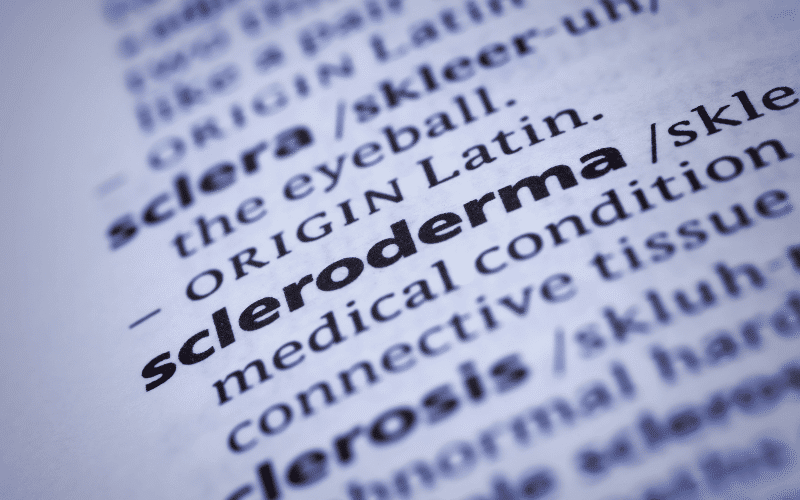3. Scleroderma: The Disease of Hardened Skin

The word Scleroderma is derived from the Greek words ‘sclero’ meaning hard and ‘derma’ meaning skin. It’s a rare connective tissue disorder that hardens your skin, but its reach isn’t limited to just the surface. Scleroderma can be classified into two main types: localized scleroderma, which affects only the skin, and systemic sclerosis, which involves both the skin and internal organs.
The symptoms of Scleroderma can vary widely, from the skin to the internal organs. The skin manifestations are usually the first signs. The skin can become tight, shiny, and itchy. It loses its elasticity, much like an over-stretched rubber band.
Then comes the Raynaud’s phenomenon – a condition that affects your fingers and toes. Exposure to cold temperatures or emotional stress can cause your fingers to turn white, then blue, and finally red. It’s a traffic light sequence that signals something’s not right.
Digestive problems can also be a part of the Scleroderma package. Acid reflux and difficulty swallowing are not uncommon. It’s like your body’s forgotten how to process food, turning meals into a battle rather than a pleasure.
The lungs and heart are often targeted by Scleroderma. You might experience shortness of breath, even with minimal activity. Heart palpitations and irregular heartbeats can also occur, leaving you with an uncomfortable feeling in your chest.
Lastly, Scleroderma can cause joint pain. The pain usually affects the hands and wrists and can lead to disability. It’s a pain that sticks, creating hurdles in the simplest of tasks.
The journey through connective tissue diseases has just begun, and there’s still a vast landscape to traverse. From Marfan Syndrome to Osteogenesis Imperfecta, the myriad of symptoms they bring encapsulate the complexity of the human body. Unveiling these symptoms, understanding them, is the first step towards managing these diseases, offering hope for those battling them. (3)